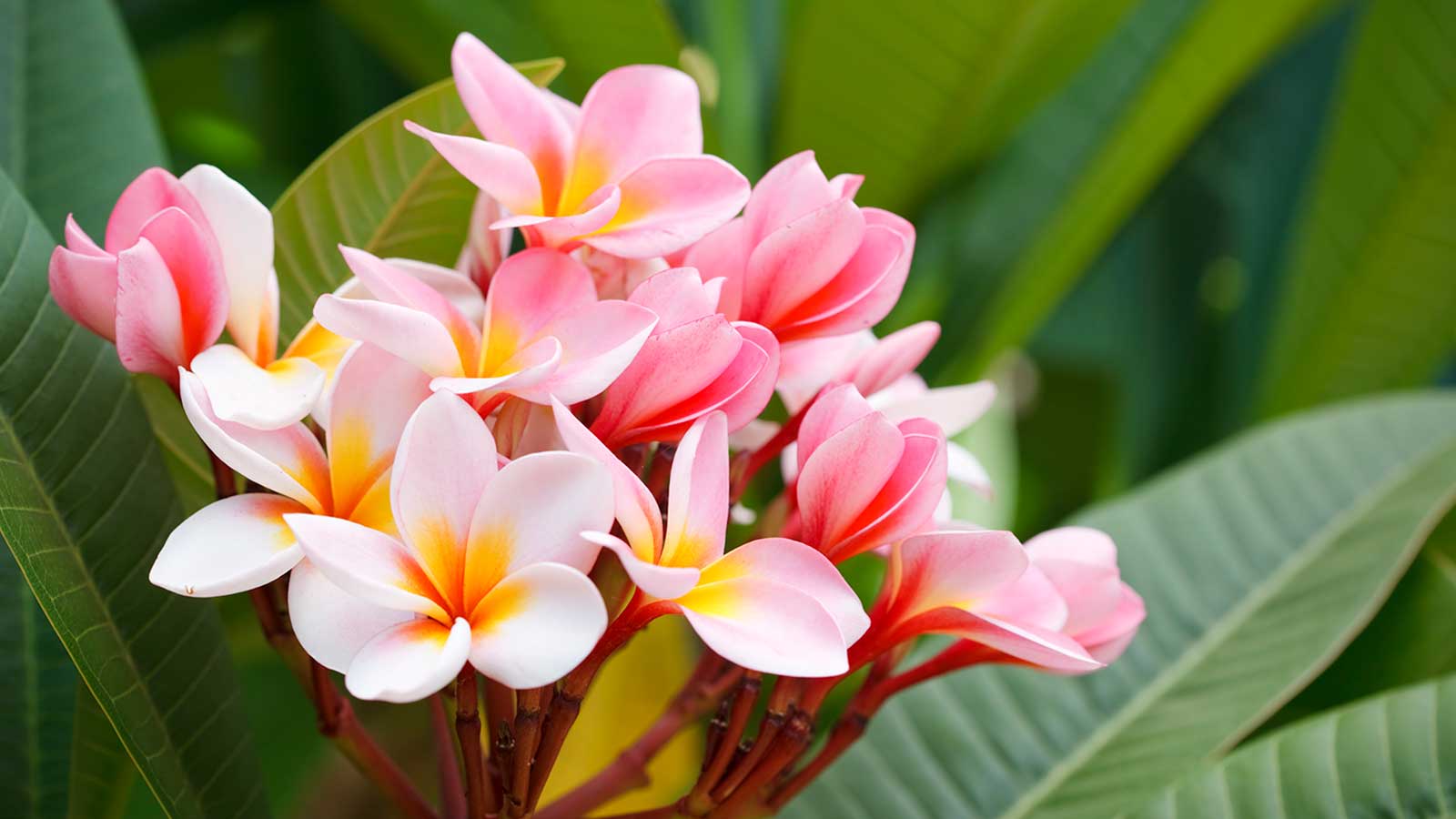How to grow plumeria from cuttings – for new frangipani plants
Whether you're growing these tropical plants indoors or out, making more is easy


Q: I am growing a frangipani tree in my conservatory, where it seems to be thriving. I'd love to propagate it by taking cuttings – is it possible to do so?
A: Frangipani, or plumeria, are beautiful, tropical plants that can be grown indoors in colder regions or outdoors in more suitable climes. And yes – you can take cuttings from them to grow new plants, which can be done in early spring.

Frangipani flowers have a beautiful fragrance
How to take cuttings from frangipani plants – in 10 steps
The task of propagating plumeria is relatively straightforward – and once they're planted, all you need to do is water them very lightly and watch and wait for new signs of growth. According to the Royal Horticultural Society, rooting should occur within four to six weeks if conditions are right.
Simply follow these steps:
- Before you take cuttings from your plumeria, make sure you're wearing gardening gloves. The sap can irritate the eyes and skin.
- Using a clean pair of pruners, take cuttings that are around 12in long from the stem tips of your plant.
- Remove the leaves and set the cuttings aside to dry for a few days. During this time, they should create a scab over their cuts which will help to prevent bacterial infection, says Anna Ohler, the Owner of Bright Lane Gardens nursery.
- Fill small pots with a lightweight soil blend. 'Choose well-draining ingredients like coco coir and perlite mixed with a seedling potting mix,' Anna recommends.
- 'Dip the end of each cutting into a powdered rooting hormone,' Anna continues. 'This increases the chances of your cutting growing roots.' Bonide's Rooting Powder from Amazon is well-rated.
- Plant the cut end of your cutting into your prepared soil medium, burying it 4in or so in the soil.
- 'Place the cuttings in a warm location that has a lot of bright light,' Anna says. However, she warns against direct sunlight which can harm them. The Royal Horticultural Society advises covering them with a polythene bag and putting them near a radiator, or placing them in a heated propagator.
- Keep the soil lightly moist – but be very careful not to do it, as the cuttings can easily rot.
- 'After four weeks, you can start to gently tug on the top part of the cutting to see if there is any resistance from new roots,' Anna says.
- Once signs of new growth have appeared, transplant your cuttings into larger pots. If you plan to move them outdoors, harden them off for a few weeks, first.
From personal experience when taking cuttings, it's always best to take a few, if possible, and plant them in individual pots. That way, you'll be less disappointed if some fail.

Anna is an avid plant hobbyist and the Owner and Operator of Bright Lane Gardens, a boutique plant nursery in Northern Michigan. With over a decade of experience in gardening and landscaping, she takes every opportunity to share her knowledge on all things plant related.

Once your cuttings have rooted, leaves should start to develop
Can you root plumeria in water?
Although it is possible to propagate plumeria cuttings in water rather than soil, it's not usually advised. However, if you wish to give it a try, remember to stay clear of the common water propagation mistakes.

A warm, bright, humid environment is best for plumeria cuttings, such as an indoor greenhouse
Once you have successfully propagated your frangipani, it's important to care for it properly. Water sparingly (barely at all during winter), avoid pruning if you can, and move it to a larger pot when needed – usually around once every two years. Before long, you should be able to enjoy more of those beautiful, scented blooms.
Design expertise in your inbox – from inspiring decorating ideas and beautiful celebrity homes to practical gardening advice and shopping round-ups.

Holly started writing about gardening five years ago, and she is a regular contributor to Homes & Gardens. She has also written many gardening features for Woman & Home and Real Homes, too. She has previous experience as a professional gardener, where she helped to plant and maintain private gardens. Holly has also looked after allotment plots over the years and loves to grow her own flowers and veggies from seed. In her spare time, she enjoys visiting local gardens, botanical drawing, and tending to her ever-growing collection of houseplants.